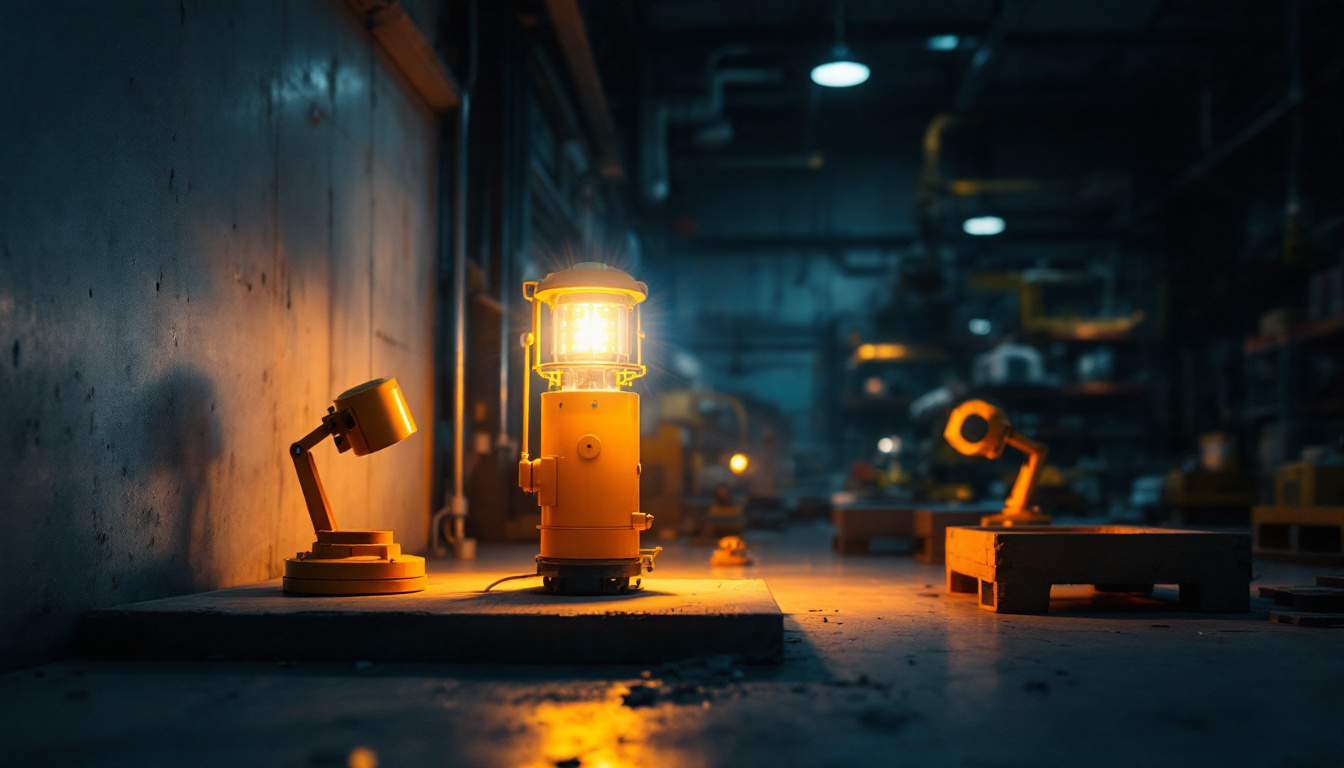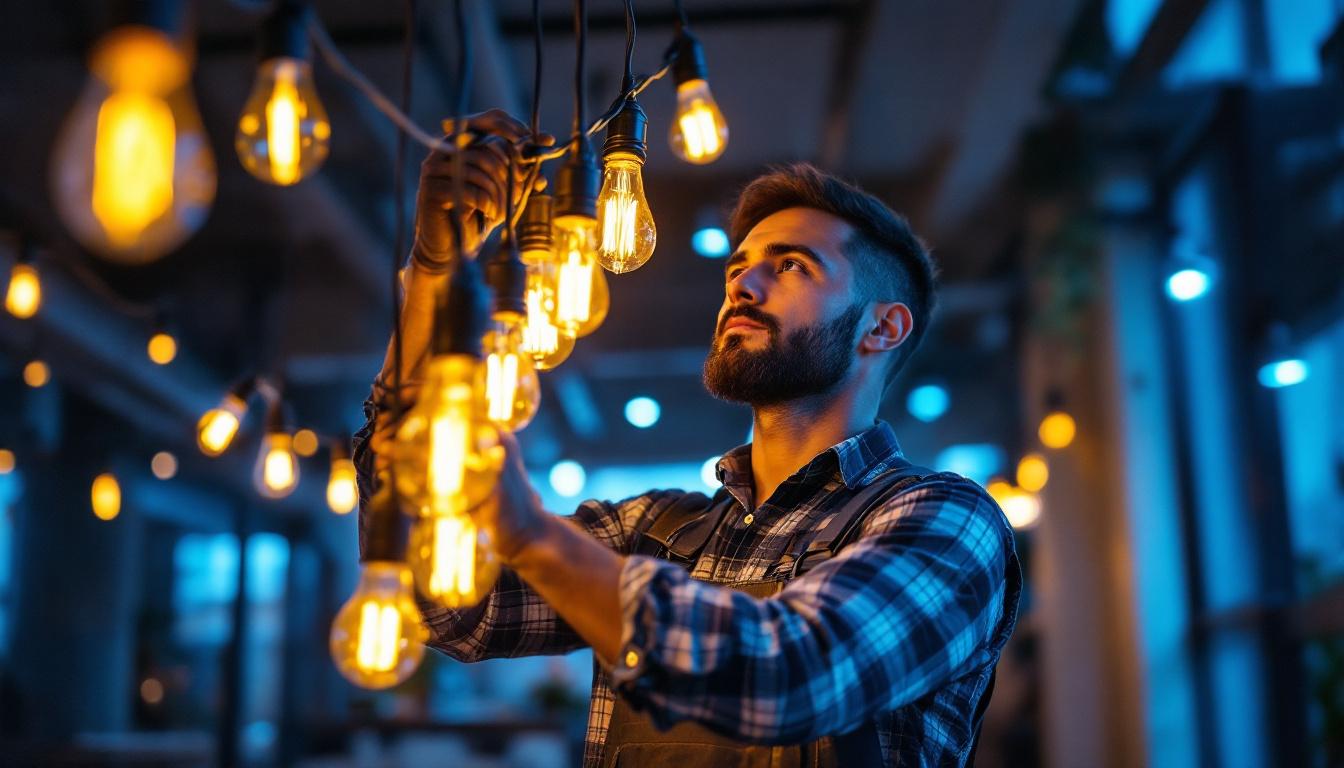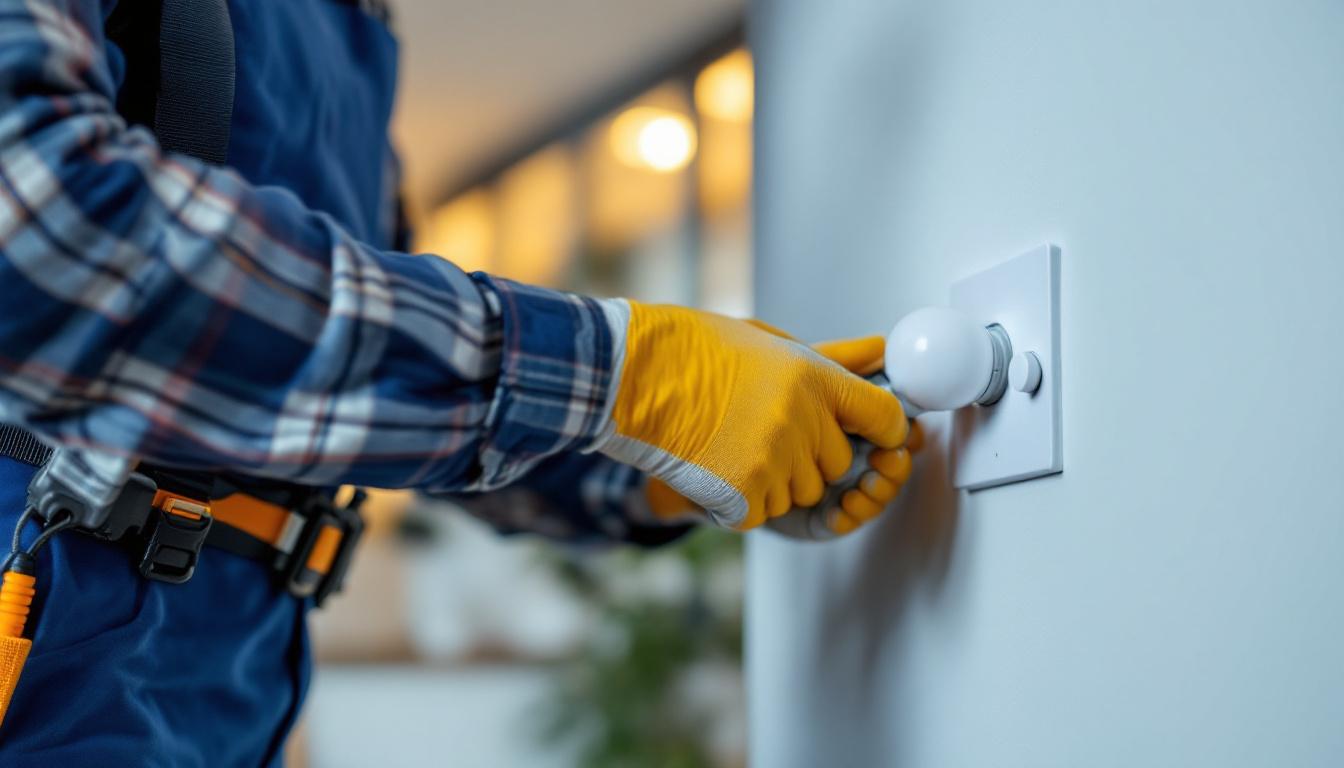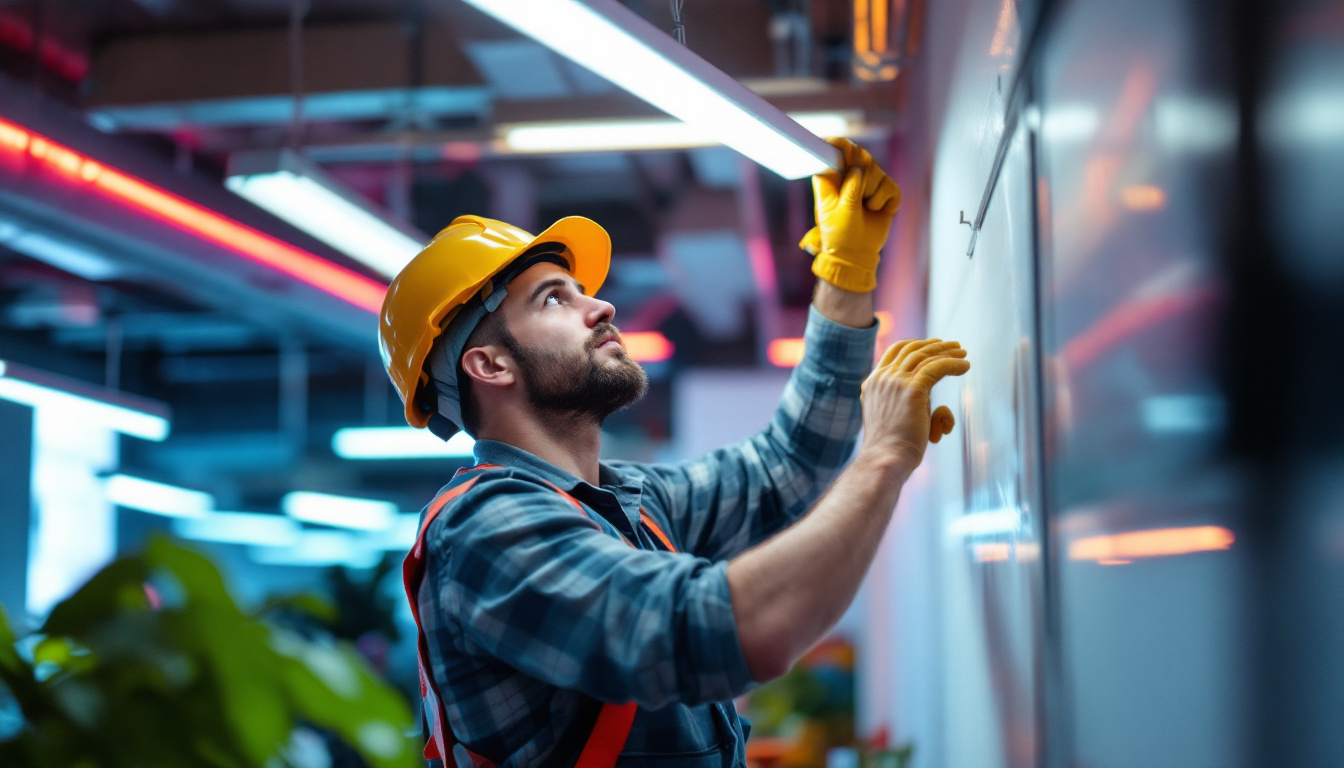
In industries where hazardous materials are present, ensuring safety is paramount. One critical aspect of this safety is the use of explosion-proof lighting. For lighting contractors, understanding the specifications, applications, and installation requirements of explosion-proof lights is essential. This guide provides a comprehensive overview, enabling contractors to make informed decisions and enhance safety in their projects.
Explosion-proof lighting is designed to operate safely in environments where flammable gases, vapors, or dust may be present. These lights are constructed to contain any explosion that might occur within the fixture, preventing ignition of the surrounding atmosphere. This section delves into the fundamental aspects of explosion-proof lighting, including its definition and importance.
Explosion-proof lighting refers to lighting fixtures that are specifically engineered to withstand internal explosions and prevent the ignition of external hazardous materials. They are classified according to various standards, such as the National Electrical Code (NEC) in the United States and the International Electrotechnical Commission (IEC) standards globally. Understanding these classifications is crucial for compliance and safety. For instance, the NEC outlines specific requirements for the installation and maintenance of these fixtures, ensuring that they are suitable for use in classified locations where explosive atmospheres may exist. Additionally, the IEC provides a framework for international compliance, facilitating the use of explosion-proof lighting across different countries and industries.
For lighting contractors, compliance with safety standards is non-negotiable. Using explosion-proof lighting that meets regulatory requirements not only ensures the safety of workers but also protects businesses from legal liabilities. Failing to adhere to these standards can result in severe consequences, including fines and project shutdowns. Moreover, the reputation of a business can be significantly impacted by non-compliance, leading to a loss of trust among clients and stakeholders. In industries such as oil and gas, chemical manufacturing, and mining, where the risk of explosion is heightened, the implementation of explosion-proof lighting is not just a regulatory requirement but a critical component of operational safety. Regular training and audits can help ensure that all personnel are aware of the standards and the importance of maintaining compliance, fostering a culture of safety within the organization.
Explosion-proof lighting is utilized in a variety of settings, including oil refineries, chemical plants, grain silos, and wastewater treatment facilities. Each of these environments presents unique challenges due to the presence of combustible materials. For example, in an oil refinery, the risk of flammable vapors is ever-present, making the use of explosion-proof fixtures essential to maintaining a safe working environment. Similarly, in grain silos, dust accumulation can create an explosive atmosphere, necessitating the use of specialized lighting that can withstand such conditions. The versatility of explosion-proof lighting fixtures allows them to be tailored to specific applications, ensuring that they not only meet safety standards but also provide adequate illumination for tasks performed in these hazardous areas.
Explosion-proof lights come in various types, each designed for specific applications and environments. Familiarity with these types helps contractors select the right fixtures for their projects. Below are some common types of explosion-proof lighting.
LED explosion-proof lights are increasingly popular due to their energy efficiency and long lifespan. They provide bright illumination while consuming less power, making them an economical choice for contractors. Additionally, LED lights generate less heat, reducing the risk of ignition in hazardous environments. Their durability is another significant advantage; LED lights are less prone to breakage compared to traditional bulbs, which is crucial in industrial settings where safety is paramount. Furthermore, many LED explosion-proof lights come with advanced features such as dimming capabilities and smart technology integration, allowing for greater control over lighting conditions and energy consumption.
Fluorescent explosion-proof lights have been a staple in industrial settings for years. They offer good illumination and are available in various sizes and configurations. While they may not be as energy-efficient as LEDs, they are still widely used, especially in environments where high-intensity lighting is required. One of the notable features of fluorescent lights is their ability to provide a broad spectrum of light, which can enhance visibility in large spaces. Additionally, these lights are often easier to install and replace, making them a practical option for contractors who need reliable lighting solutions in a timely manner. However, it’s essential to consider the ballast type, as some older models may not perform well in extreme temperatures, which can affect their longevity and efficiency.
Halogen explosion-proof lights provide bright, white light and are often used in outdoor applications. They are known for their high color rendering index (CRI), which makes them ideal for tasks requiring accurate color perception. However, contractors should consider their heat output when selecting halogen lights for hazardous areas. Halogen lights are also favored for their instant-on capabilities, which means they reach full brightness immediately, making them suitable for situations where lighting needs to be activated quickly. Additionally, halogen lights can be used in combination with reflectors to maximize light distribution, ensuring that even the most expansive work areas are well-lit. Despite their advantages, it’s important for contractors to balance the benefits of halogen lighting with the potential for increased energy costs and heat generation in sensitive environments.
When selecting explosion-proof lights, several key features should be considered to ensure optimal performance and safety. Understanding these features can help contractors make informed choices that align with project requirements.
Explosion-proof lights are typically constructed from robust materials such as aluminum or stainless steel, designed to withstand harsh conditions. The housing must be sealed to prevent the ingress of dust and moisture, which could compromise safety. Contractors should assess the material and construction quality to ensure durability in challenging environments.
The ingress protection rating indicates the degree of protection provided against solid objects and liquids. For explosion-proof lights, a high IP rating is essential. An IP rating of at least IP65 is often recommended for environments exposed to dust and water. Understanding these ratings helps contractors choose appropriate fixtures for specific applications.
Explosion-proof lights come with various mounting options, including pendant, wall, and ceiling mounts. The choice of mounting depends on the specific application and the layout of the space. Contractors should consider the mounting options available to ensure proper installation and optimal lighting distribution.
Explosion-proof lights are used in a variety of industries where hazardous materials are present. Understanding the specific applications can help contractors tailor their lighting solutions to meet the unique needs of each environment.
The oil and gas industry is one of the primary sectors that require explosion-proof lighting. Drilling sites, refineries, and storage facilities often contain flammable gases and vapors. Using explosion-proof lights in these areas is critical to ensuring worker safety and preventing catastrophic incidents.
Chemical processing plants handle various hazardous materials that can easily ignite. Explosion-proof lighting is essential in these facilities to provide adequate illumination while minimizing the risk of explosions. Contractors must ensure that the selected lighting meets the specific requirements of the chemicals being processed.
Mining operations often involve the extraction of materials in confined spaces where flammable gases may be present. Explosion-proof lights are crucial for ensuring visibility and safety in these environments. Proper lighting can help prevent accidents and improve operational efficiency.
Proper installation of explosion-proof lights is critical to ensuring their effectiveness and safety. Lighting contractors must be aware of various installation considerations to comply with regulations and optimize performance.
Explosion-proof lights often have specific electrical requirements that must be adhered to during installation. Contractors should ensure that the fixtures are connected to appropriate circuits and that all wiring meets safety standards. This includes using suitable conduit and connectors to prevent any potential hazards.
The location and positioning of explosion-proof lights play a significant role in their effectiveness. Contractors should assess the layout of the area and determine the optimal placement of fixtures to provide adequate illumination. This may involve considering factors such as beam angle, height, and potential obstructions.
Once installed, regular maintenance of explosion-proof lights is essential to ensure continued safety and performance. Contractors should establish a maintenance schedule that includes inspections, cleaning, and any necessary repairs. This proactive approach can help identify potential issues before they become serious problems.
Selecting the right explosion-proof lights can present challenges for lighting contractors. Understanding these challenges and how to address them can lead to better decision-making and project outcomes.
Explosion-proof lights can be more expensive than standard lighting options due to their specialized design and construction. Contractors must balance the need for safety with budget constraints. Exploring different brands and models can help identify cost-effective solutions without compromising safety.
The lighting industry is continually evolving, with new technologies emerging regularly. Keeping up with these advancements can be challenging for contractors. Staying informed about the latest products and innovations in explosion-proof lighting can help contractors make better choices for their projects.
Educating clients about the importance of explosion-proof lighting and its benefits can be a challenge. Some clients may not fully understand the risks associated with hazardous environments. Lighting contractors should be prepared to provide information and guidance to help clients appreciate the value of investing in quality explosion-proof lighting.
Explosion-proof lights are a vital component of safety in hazardous environments. For lighting contractors, understanding the various types, features, and applications of these lights is essential for successful project execution. By selecting the right explosion-proof lighting solutions and adhering to installation best practices, contractors can enhance safety and compliance in their projects.
As the demand for safety in industrial settings continues to grow, staying informed about explosion-proof lighting will empower contractors to meet client needs effectively. By prioritizing safety and quality, lighting contractors can build a reputation for excellence in their field, ensuring a brighter and safer future for all.
Ready to enhance the safety and compliance of your lighting projects in hazardous environments? Look no further than LumenWholesale for your explosion-proof lighting needs. We provide contractors with top-quality, spec-grade lighting products at unbeatable wholesale prices, ensuring you get the most reliable and high-performance lighting without the inflated markups. Our extensive selection meets the highest industry standards, and with free shipping on bulk orders, you’ll enjoy the best value without any hidden fees. Elevate your lighting solutions with the perfect blend of quality, affordability, and convenience at LumenWholesale – Wholesale Lighting at the Best Value.

Discover how flicker lights bulbs boost efficiency and safety for lighting contractors.

Explore the essentials of dimmer switches for LED lighting in this comprehensive guide.

Discover how top lighting contractors leverage modern fluorescent colors to transform spaces.

Explore the innovative strategies smart lighting contractors employ with LED technology to revolutionize energy efficiency and design.